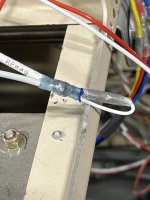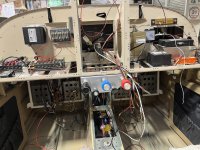What is the accepted method for splicing shielded wires? The center wire(s) is(are) not a problem, but the shield? Just unwrap it, wind it up, and splice it to another unwrapped, unwound shield? The wire in question is my shielded P Lead from my right PMag.
Last edited:






